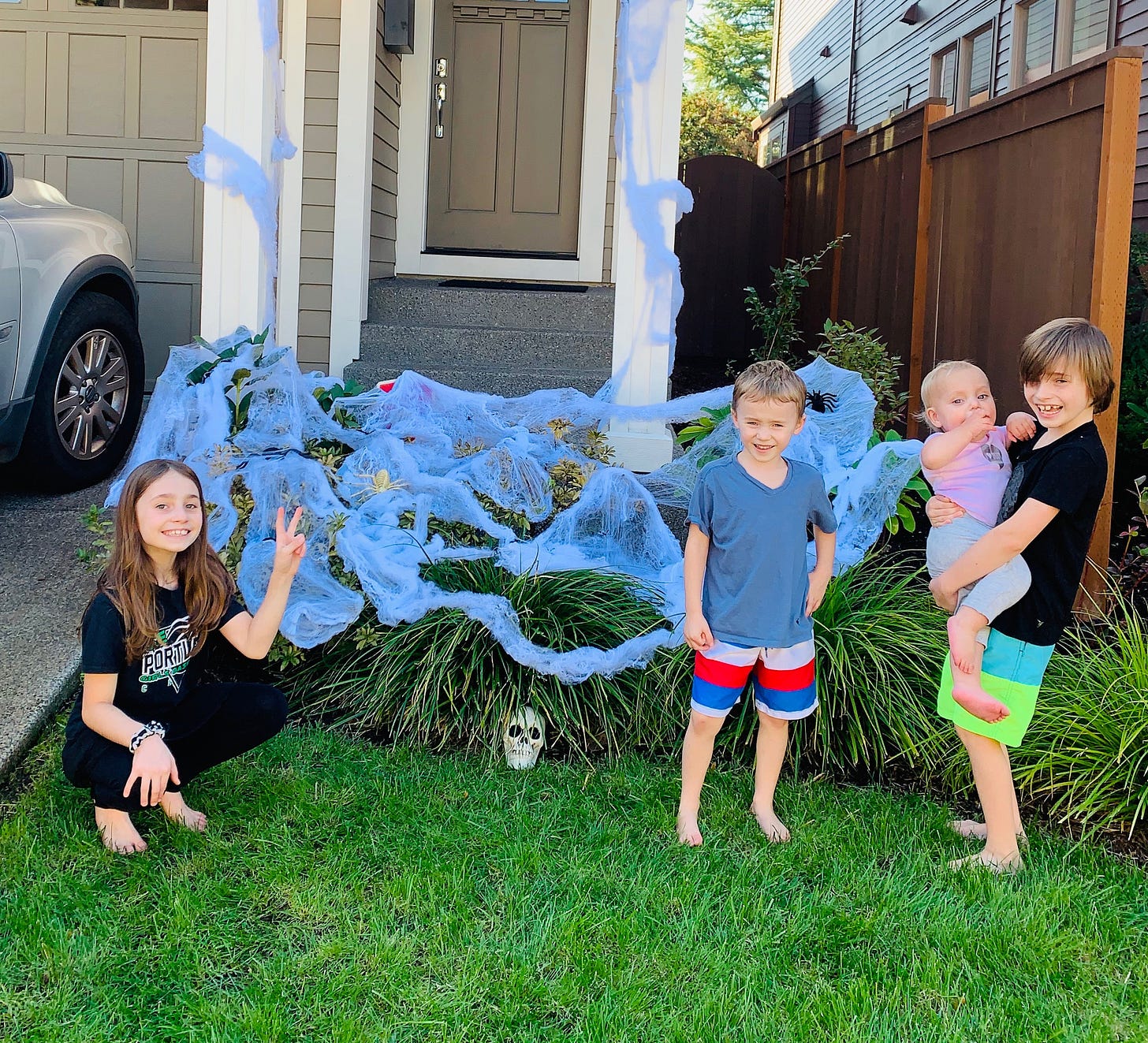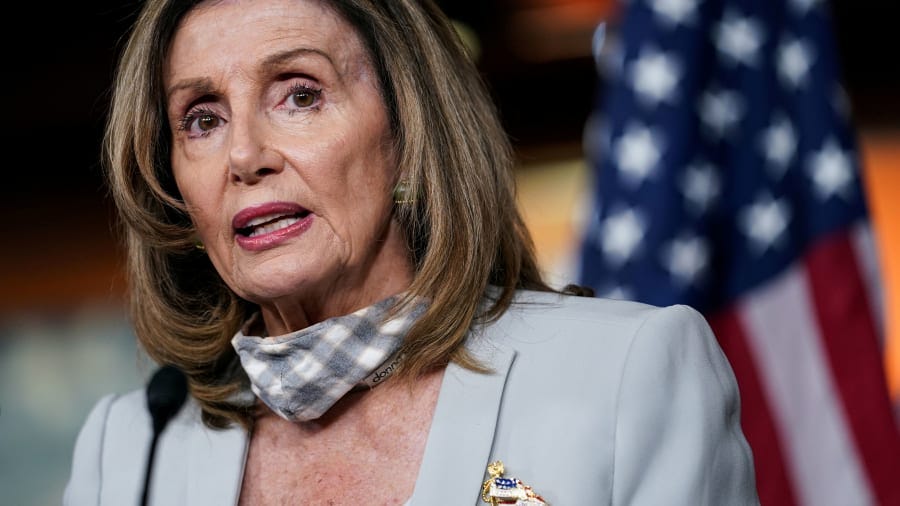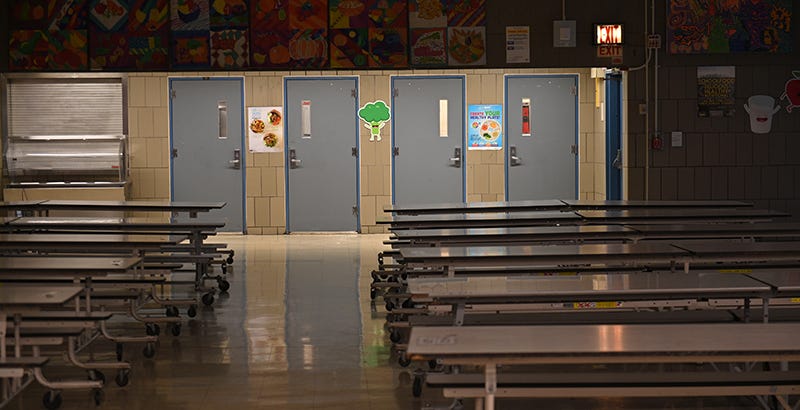I am not the mom who decorates for holidays. Actually, it was one of my biggest weaknesses as an elementary teacher – seasonal bulletin boards. I was the teacher who would have the same bulletin board up for the entire year and often would ask colleagues to do them for me. Holidays are the same in my house, I typically do not decorate for each season because the upkeep feels like time and energy that I can spend doing something more productive. This year is very different. My nine-year-old daughter insisted over and over again that we decorate for Halloween and fall, and I caved, mostly because we are not trick-or-treating or doing basketball camps and I am feeling some mom-guilt. So, my weekend was full of messy spider-webbing and light-up pumpkins, as well as the final push on Sunday to catchup on our Friday homework that we skipped altogether.

This year I am learning that things are going to be very, very different and that is okay. My linear brain and the way I’ve spent my entire life compartmentalizing things for efficiency will not work for my kids, my family, or myself. The edges are blurred and the same goes for our education systems – especially as it relates to collecting data and understanding where we can and must lean in. Our traditional methods for understanding, supporting, and improving teaching and learning must expand to include new partnerships with our community members, families, households, and other social service providers. Now is the time to open our virtual “doors” and invite partners to collaborate, those who may be better positioned to design new, modernized methods for supporting students and families.
FEDERAL FUNDING AND POLICY
The jobs report noted that 89% of those leaving the workforce in September were women, a trend that will likely have an inter-generational impact on our nation’s workforce, as well as the social, emotional, and economic outcomes for our youth.
There was plenty of news from the capital this week, including interpretations of any mention of education during the presidential debate, swirling talks and a last-ditch vote on the next federal relief package, with a culminating hospitalization for the President who tested positive for COVID-19 test. However, the most concerning takeaways garnered less coverage. The jobs report noted that 89% of those leaving the workforce in September were women, a trend that will likely have an inter-generational impact on our nation’s workforce, as well as the social, emotional, and economic outcomes for our youth. In addition, a Brookings report reported on data indicating that the Latina/o community make up the greatest share of employees in industries hit hardest by the pandemic. Congress and White House leadership are slowly making gains on crafting and passing a relief package, this week the second HEROES Act included an increased line item for K-12 education at $182B, but without the state and local supports for disproportionately impacted communities our social systems will continue to buckle and struggle. Finally, on a meta-level, some are reporting that the President’ hospitalization my speed up discussions about a federal relief package over the next few days and Pelosi is urging Democrats to begin flipping House state delegations incase Trump or Biden do not win the electoral college.

The COVID-19 recession hit Latino workers hard. Here’s what we need to do.
Trump coronavirus diagnosis changes dynamic of stimulus talks, Nancy Pelosi says
Economy adds 661K jobs in final jobs report before Election Day
Democrats Boost COVID-19 School Aid, Cut State and Local Relief in Revised Bill
House approves $2.2T COVID-19 relief bill as White House talks stall
Democrats unveil scaled-down $2.2T coronavirus relief package
Congressional Research Service: The Electoral College: A 2020 Presidential Election Timeline
Local Officials Say They Need More Time to Spend CARES Act Money, as Future Aid Remains in Doubt
STATE AND LOCAL POLICY
Local, public-private partnerships for social services, research, policymaking, and funding are critical to support our governance and infrastructure for families. Some communities are using these partnerships to bridge the digital divide or homework gap. Others, including research and policy communities, aim to examine how we can modernize our education finance infrastructure to better support our public schools in the context of the post-pandemic education systems. Another area of concern arising from the most recent school enrollment data is on early learning programs, specifically transitions from preschool to kindergarten. The Education Commission of the States reported this week that “twenty-three states and the District of Columbia have policies in place to guide the transition process from pre-K to kindergarten, with 17 states requiring family engagement in this process”. We are seeing declining trends in enrollment for our youngest learners, leaving our schools potentially underfunded, while also failing to track and support the development and well-being of our entering kindergarteners. In addition, there are few state and local initiatives to study and report on actionable recommendations for our leaders regarding these challenges.
Tennessee dedicates $3M to bridge Chattanooga students' digital divide
This Year, States and Districts Can't Count on Enrollment Counts
Mind the kinder-gap: New data on children’s math and reading skills as they enter kindergarten
Childcare gets a boost with new Michigan budget, but structural problems remain
Amid changes to diploma rules, Newark’s graduation rate climbs above 80%
RESEARCH IN THE TIME OF COVID
One big takeaway is that this is a long game that provides us time to explore and examine ways we can modernize assessment, measurement, and evaluation to better meets the needs of our community and put less burden on our teachers, students, and families.
Many school districts across the nation are foregoing fall testing due to the challenges facing our communities and the difficulties involved in remote proctoring. This provides education researchers with a complex puzzle to solve: How will we address the missing academic data and pivot our measures and evaluations in the context of varying COVID policies and supports? This week a handful of leading scholars shared their perspectives on tackling these questions. One big takeaway is that this is a long game that provides us time to explore and examine ways we can modernize assessment, measurement, and evaluation to better meets the needs of our community and put less burden on our teachers, students, and families. If this work is of interest to you, please reach out to me at cpitts@pps.net to discuss in more detail.

SUPPORTING FAMILIES
Students and families are making things work during remote or hybrid learning. In response to the difficulties our communities face each day, education leaders must consider both the relational areas of support and systemic policy levers. This week USED and the Office of Civil Rights (OCR) both released recommendations and answers to common questions about how to serve special education students throughout distance learning. The OCR suggested that schools should make every effort for in-person learning and can prioritize re-opening for students with disabilities. This is especially critical for our communities who are experiencing lingering trauma from natural disasters like hurricanes and wildfires. One research institution is answering this call to action: The University of Texas in Austin recently launched the Texas Center for Equity Promotion at the College of Education, focused on disrupting inequities in education and health to improve the lives of children and families (follow the center on twitter at @TexCEP for up to date information).
Even when the smoke clears, schools find student trauma can linger
USED released obligations to special education services and civil rights laws
The University of Oregon released data this week showing that 80% of parents surveyed said they oversee distance learning for multiple children and 25% of Black and single-parent households explain that grandparents are also taking on these responsibilities.
TEACHING, LEARNING, AND ASSESSMENT
Families and educators are at the center of pandemic-effected teaching and learning and should be the first to confer on any changes or supports. The University of Oregon released data this week showing that 80% of parents surveyed said they oversee distance learning for multiple children and 25% of Black and single-parent households explain that grandparents are also taking on these responsibilities. These variations in teaching and learning environments reify our call to action, to provide a tight-and-loose approach to accountability and flexibility in maintaining quality standards throughout the pandemic. In response to the potential for learning loss, tutoring in early grades can play a critical role in building those just-in-time on-ramps to grade level learning this year. That said, there is still worry about more specific areas where our systems are lacking functionality and failing to pivot quickly enough, like compensatory education and assessment and measurement.

Report: Tutoring by teachers, staff leads to greater academic improvement
Florida students must take standardized tests on campus, angering some parents
Another pandemic shift: In many school districts, 1 in 10 kindergartners didn’t show up
3 Ways to Support Experiential Learning During and Beyond the Pandemic
UPCOMING EVENTS
Monday, October 5 (2:00 EST) Bellwether webinar on A Lost Year of Data? What Disruptions From COVID-19 Mean for Education Research
Tuesday, October 6 (2:30 EST) Learning Policy Institute on Restarting and Reinventing School for Equitable and Empowering Learning
Tuesday, October 13 (2:00 EST) UT Austin on Latina/o Equity in US Higher Education: A National Campaign for Equity Assessment Policy.
JOIN THE COALITION
Your perspective, question, idea, thought, or critique is welcome. Keep your ideas coming so we can refine our work. The Education Policy Hotlist also welcomes guest writers, experts, and contributors. If you have an idea for a piece to add or an additional blog, please send an email summarizing the topic and your ideas to christinemtpitts@gmail.com.
Dr. Christine M. T. Pitts serves as Manager of Research and Evaluation at Portland Public Schools. As an Oregonian, raised by a multicultural family of educators, she brings a decade of progressive strategic leadership experience, a transformative vision, and analytic skill to crafting state education policy. An educator and researcher by training, she has conducted legislation, governance, and policy analyses on a wide array of education issues using social network analysis and mixed methods research. In addition, Dr. Pitts is a facilitative leader who deeply understands and co-constructs local and national partnerships and convening across stakeholder groups. Dr. Pitts currently coordinates between state and national policy leaders to investigate and advocate for policies that prioritize equity in education. Christine lives with her husband and four children in Portland, Oregon. Follow her on Twitter @cmtpitts.




